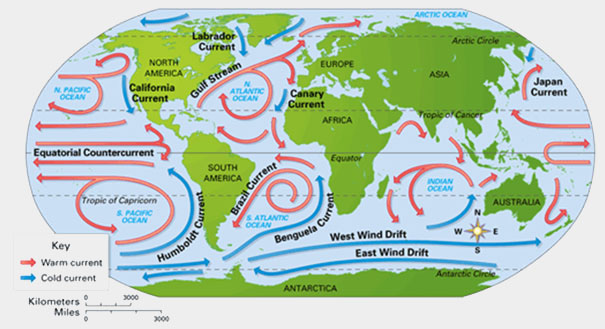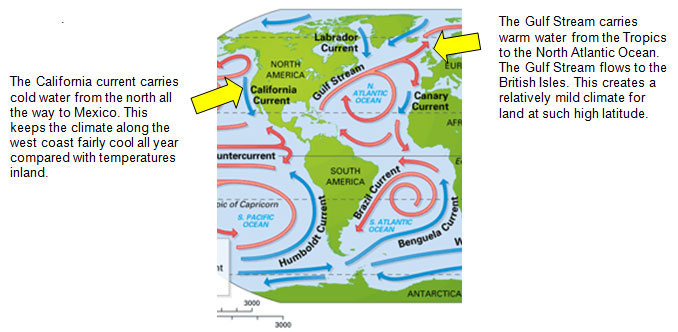The ocean covers more than 70% of the Earth's surface and plays a major role in regulating the weather and climate of Earth. About half the solar energy reaching Earth is absorbed by the ocean and land, where it is temporarily stored near the surface.
Of the energy absorbed by the ocean, most is released locally to the atmosphere, mostly by evaporation and infrared radiation. The remainder is transported by currents to other areas.
There are two types of ocean currents: surface currents and deep currents. Thermohaline circulation, also called the global ocean conveyor, moves water between the deep and surface ocean worldwide. The picture below shows the global ocean conveyor.
![]() Click each question mark on the map below to see what is happening to the water.
Click each question mark on the map below to see what is happening to the water.
The map below shows the major surface currents of the world.

As water moves through the thermohaline circulation, it may detour along one of the surface currents. Click below to see an animation of this.
Some the surface currents are warm water currents and some are cold water currents. Because they are warm or cold, surface currents affect the climate of the land near the area where they flow.

Sources of images used in this section:
Thermohaline Circulation, Brisbane, Wikimedia Commons
Earth's Surface Winds, TERAA Environmental Research Institute